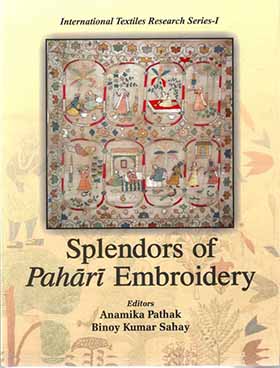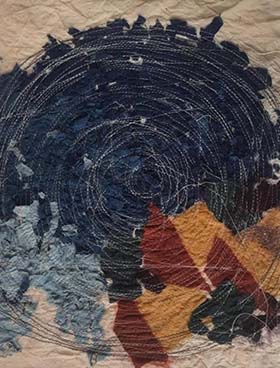Version
Online (Peer Reviewed)
Starting Year
2017
Language
English
Periodicity
Biannual
Country of Publication
India
To strengthen the contribution towards research, a peer-reviewed Bi-annual e- journal is published by Textiles and Clothing Research Centre (TCRC). It is established to serve as a platform for encouraging quality research and for disseminating and exchanging latest research information with other professionals at the National and International level in the various branches of Textiles and Clothing.
Textiles and Clothing Research Centre (TCRC) is pleased to announce a call of papers in continuation to its on-going series on textile traditions from different regions of India to be published in the TCRC e-Journal, Volume 6, Issue 11 in August ’2022 based on the theme ‘Textile Tradition of India: Central Region’. The central region of the Indian subcontinent represents the glorious history of textile traditions, uniqueness of the weaves, textures, and quality of textiles of diverse communities. It was one of the most prominent textile centres of India that have witnessed the transition of patronage from Indian royalty and nobility. The craftsperson of the region has used and innovated weaving, dyeing, printing, embroidering, and appliqué techniques to create textile masterpieces. The most magnificent techniques of the region are weaving, printing, jute braiding, zardozi embroidery at various centers of central India. Some of the famous ones are silk and cotton weaving from Chanderi, cotton weaving of Nagpur, block and batika print from Maheshwar, Burhanpur, Bagh, Gwalior, Ratlam, Mundasur, knotted carpet of Mandla, chattarpur, woollen durries from Jabalpur, Madhya Pradesh are well known. The list of textile craft traditions of the central region is wide-ranging and endless. In this issue, we welcome interdisciplinary articles based on original research on any textile craft of this region describing the history, anthropology, material, technique, sociology, conservation, museology, field survey and trade of textiles.
Submission Details: Please submit abstracts of 250 words or less for consideration. The work must be original and not previously published. The article must begin with the title of the manuscript in bold, uppercase and followed by the names of authors in font size 12. The authors must give brief biography in 100 words about their achievements and interests, including their address, telephone number and email address.
The article should be prepared in the following order and style: Word Limit is 2500 words not more than that: 1) Title of the article, 2.) Name of the author(s) with affiliations, 3.) Abstract, 4.) Keywords, 5.) Introduction, 6.) Body of the article 7.) Conclusion/suggestions, 8.) References Chicago Style 9.) Acknowledgements, if any.10.) High-resolution figures should be submitted as JPEG files with authors copyright to publish and JPEG file name as Figure Number. 11.) List of figures with captions. 12.) Table titles must be above the table. Don’t use any text box for writing plate captions.
Quick points for writing style: Times New Roman, size: 12, Line spacing: 1.15, Text alignment: Justified, Text heading in Title Case, Keep the margins for page layout: Normal (i.e.1”). High-resolution figures should be submitted as JPEG files.
Deadline for submissions of Abstract: December 25, 2021
Authors will be notified of acceptance not later than: January 2, 2021
The deadline for the final paper is: February 20, 2022
If you want to contribute, please contact our editorial team at editorstcrc@gmail.com For more information, please visit www.tcrc.in.
Smita Singh
Chief Editor, TCRC
Textile Conservation Consultant,
Textile Heritage Conservation,
New Delhi
Rohini Arora
Editor, TCRC
Empanelled designer,
Assistant Professor, GGSCW
Chandigarh
Publisher Details
Owner Name / Responsible Person: Textiles and Clothing Research Center / Dr. Rohini Arora
Address: 706, Yuva Apartments, MDC, Sector-6, Panchkula, Haryana – 134114
Email: editorstcrc@gmail.com


